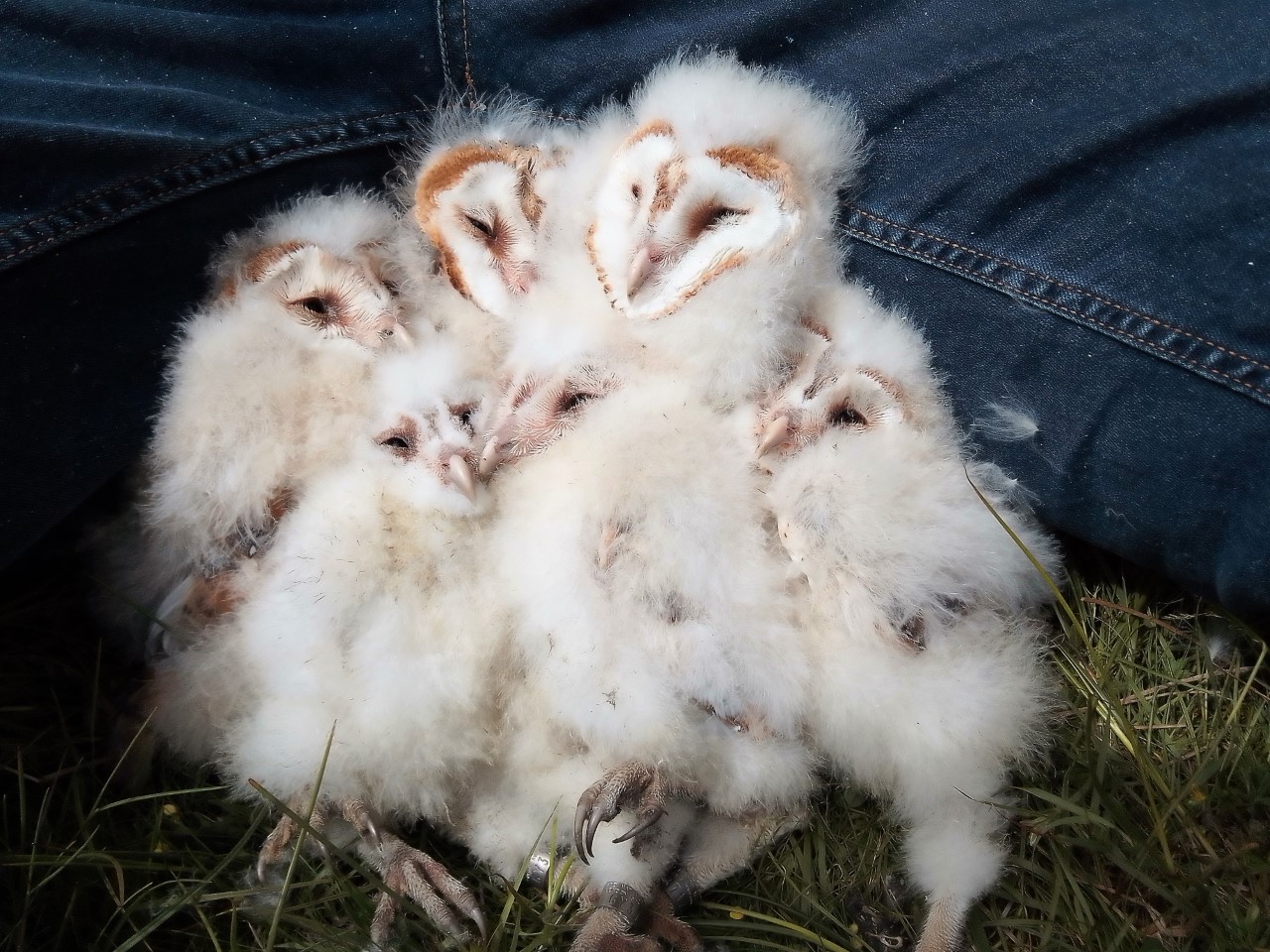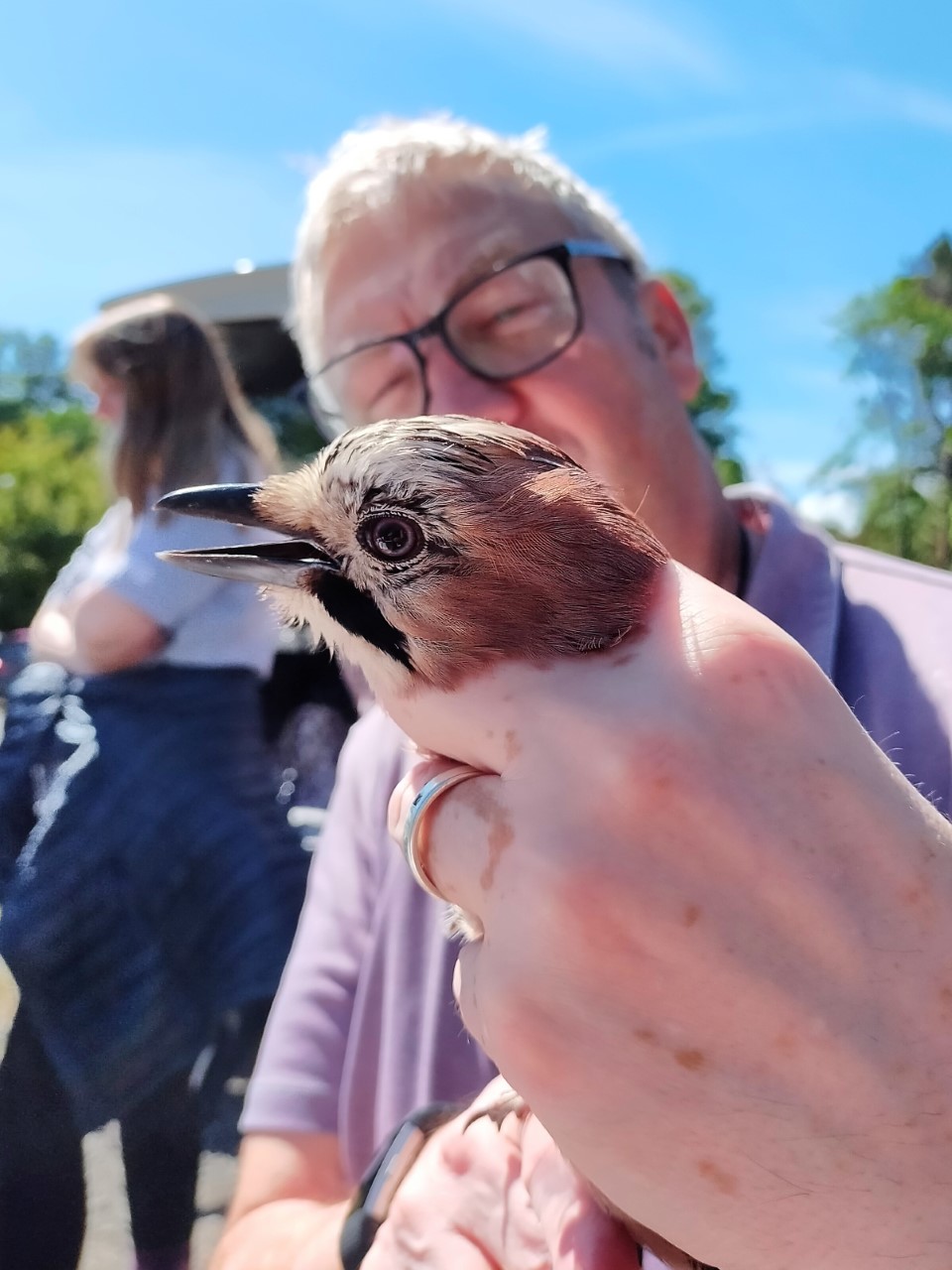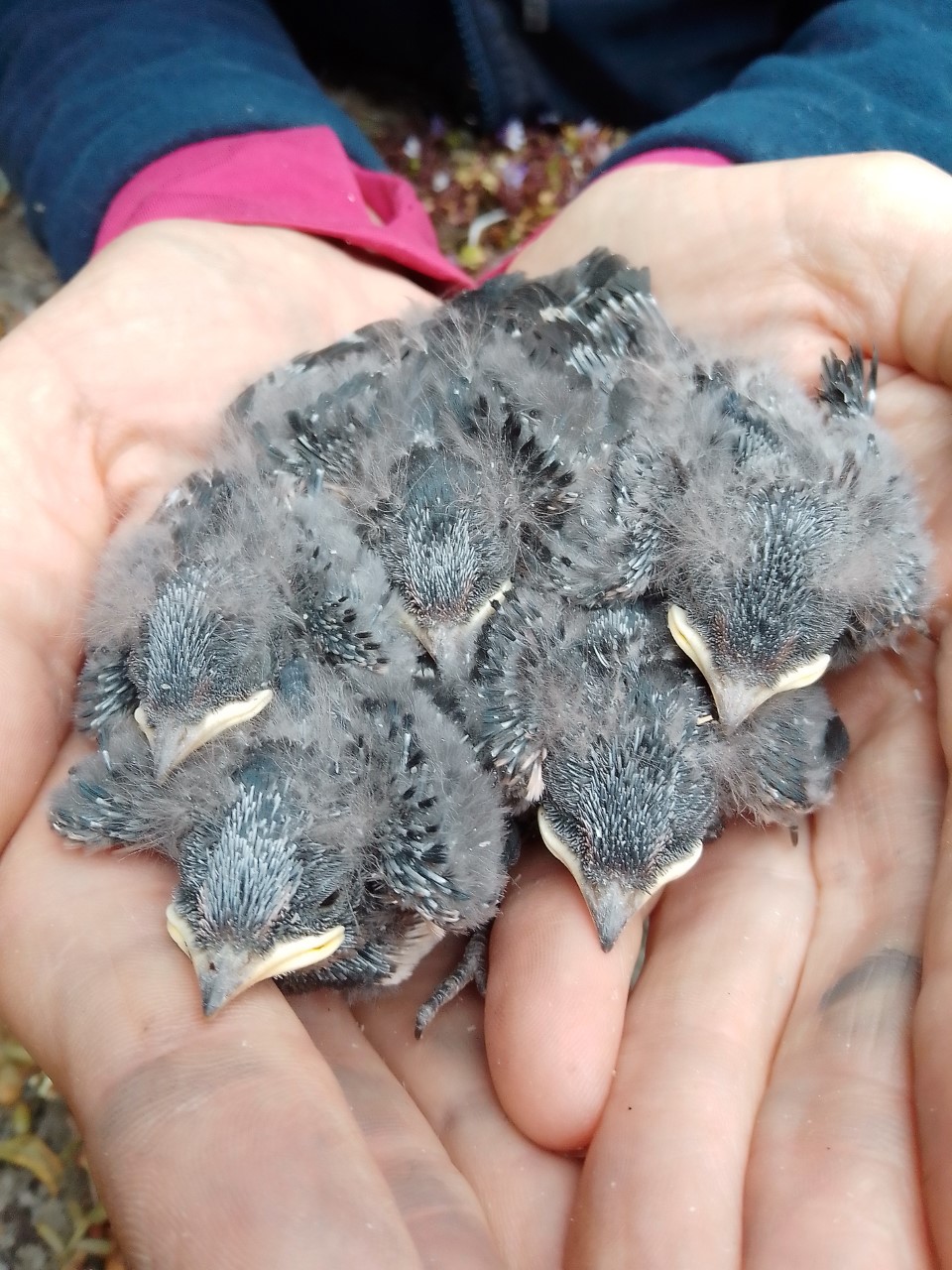North East ornithologist, Phil Hanmer, shares a new update summarising bird ringing across Northumberland throughout June

Barn Owl Chicks © Phil Hanmer
We seem to have ringed our last young Tawny Owls of this year on 18 June in a most unusual site. The box design is one sold for barn owls and it’s in a garden, which wasn’t particularly secluded and was near to people. Checking the site for barn owls back on the 20 May led to the surprise capture and ringing of a new adult female weighing a healthy 590g with three eggs. Returning to check on the 7 June she was sitting tight on very small young but on 18 June she was roosting out and my C ringer Hilary and a trainee were able to ring three healthy pulli. She was an adult owl who has almost certainly nested somewhere else previously, so it seems quite likely she had lost her former nest site to the winter storms. This is one of 14 sites we have monitored this year, with 11 being successful. This is a small sample, but it generally seems to have been a good year for Tawny Owls.
We started ringing Barn Owls this month, which will continue for some time, with an early nest being near Buston on the 7 June. Here there were 5 young of which we ringed 4, the other being just too small and unlikely to survive. We also ringed the adult male, who do tend to spend time in the nest with young. I was able to pass some news onto the owner of this site that a young bird I ringed in this very same box back on the 5 June 2020 was now a nesting female in a box over to the west in the Breamish Valley with 4 eggs. This seems like an unusual movement for a Barn Owl to have made.
An early larger brood was ringed over near Longhorsley on the 18 June. Another brood of 6 rather large birds were found near Newton by the Sea. One of these showed the characteristic ‘spots’ of a female developing under the wings and on the breast; together with a hint of red-brown colouration seen in northern continental owls of the ‘guttata’ sub-species. More modest broods, both of three owlets, were found and ringed just south of Warkworth on a farm being threatened by a planning application for more tourist accommodation. Another two-year-old female, that may have failed to breed last year had only one healthy owlet at Howick this year.
We arWe don’t start regular ringing of small passerine birds at Howick until we have made real progress with the owls but we did, at the request of Newcastle University, do a ringing demonstration on the 15 June for Master’s degree students. The session went well as they captured 41 new birds and 12 retraps from previous years. Early on, one of my trainees got to ‘handle’ his first Jay. These are very beautiful resident birds with a ‘wicked beak’ that must be controlled. Then an adult male Great Spotted Woodpecker and four juveniles, all recognised by their red tonsures, were also ringed.

Jay © Phil Hanmer
Most small cavity, or hole nesting, birds that frequently use nest boxes have finished nesting now, so hopefully you will be seeing young Blue Tits and Great Tits in your gardens. However, open nesting birds will be continuing for some time, including Swallows. My trainees need practice on these birds and the attached picture shows 5 young swallows (pulli) that have just been ringed. How many of you would have known these were swallows at a glance?

Swallows © Phil Hanmer
It’s also the season for wader chicks to appear on the Northumberland Moors. These can be very thin on the ground but another of my C Ringers spends considerable time searching for these birds. On the 9 June he and a trainee were on a farm near Wooperton and they spotted a Redshank carrying a BTO metal ring and some coloured (darvic) rings. Reading this as: Left below knee = Black, Left above = Metal, Right below knee = Red, Blue, Right above = Black. It was possible to identify this individual as having been first ringed on the 1 September 2020 near Southampton at a high tide winter roost and controlled again at the same location on the 24 September 2021. As these birds are very site faithful its occurrence near Wooperton probably indicates this is where it was hatched itself and now has returned to nest. This shows that if you see a bird with a ring or rings, please try to record the details and pass them on. You might discover something interesting.
It would be helpful to receive reports of owl sightings around buildings and trees were they just might be nesting; especially they are carrying food, perhaps in the early evening. After the winter storms some natural and artificial sites have been lost so some will be in new sites.
We start ringing at Howick Ringing Station on the 15 July and continue, weather permitting, most Friday and Saturday mornings until the end of October. If you’re interested in seeing what we are doing just call in at the picnic-benches at Howick.